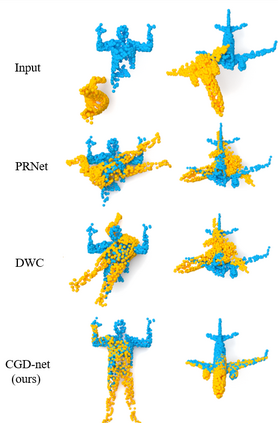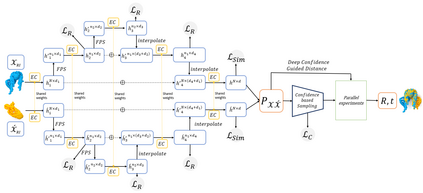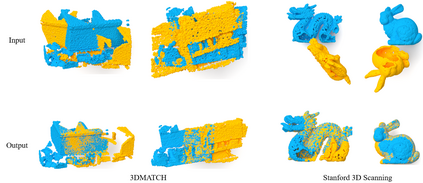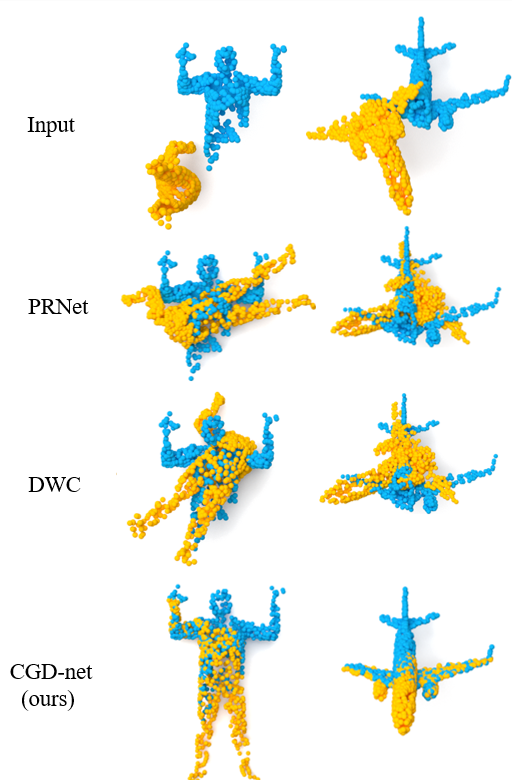We present a novel non-iterative learnable method for partial-to-partial 3D shape registration. The partial alignment task is extremely complex, as it jointly tries to match between points and identify which points do not appear in the corresponding shape, causing the solution to be non-unique and ill-posed in most cases. Until now, two principal methodologies have been suggested to solve this problem: sample a subset of points that are likely to have correspondences or perform soft alignment between the point clouds and try to avoid a match to an occluded part. These heuristics work when the partiality is mild or when the transformation is small but fails for severe occlusions or when outliers are present. We present a unique approach named Confidence Guided Distance Network (CGD-net), where we fuse learnable similarity between point embeddings and spatial distance between point clouds, inducing an optimized solution for the overlapping points while ignoring parts that only appear in one of the shapes. The point feature generation is done by a self-supervised architecture that repels far points to have different embeddings, therefore succeeds to align partial views of shapes, even with excessive internal symmetries or acute rotations. We compare our network to recently presented learning-based and axiomatic methods and report a fundamental boost in performance.
翻译:我们为部分至部分 3D 形状的登记提出了一个全新的非学习性方法。 部分校正任务非常复杂, 因为它共同试图匹配点和辨别点没有出现相应的形状, 导致多数情况下解决办法非独一和错误。 到目前为止, 已经建议了两个主要方法来解决这个问题: 抽样一组点云之间可能有对应关系或进行软对齐的分点, 并试图避免与隐蔽部分相匹配。 这些偏向性在微小或变异但无法进行严重隔离或存在外部值时会发生。 我们提出了一个独特的方法, 叫做信任引导距离网络( CGD- net), 我们在这个方法中, 我们把点嵌入点和点云间空间距离之间的相似性结合起来, 给重叠点带来一个最佳的解决方案, 同时忽略只出现在形状之一的部分。 点特征生成是由自我超强的架构完成的, 该结构显示着不同的嵌入点, 因此在严重隔离或存在外部外端时会成功将部分观点与我们基本的状态对比。








